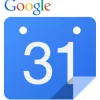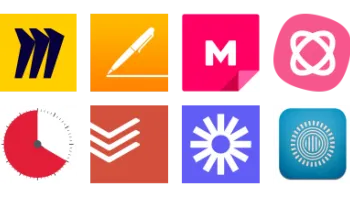
New! Digital Literacy & Well-Being Curriculum
The curriculum you trust – updated for today's digital dilemmas.
Take a look inside 3 images
Google Calendar
Pros: Users can add multiple calendars to their main calendar, share events, and view calendars in different formats.
Cons: Calendars with a lot of subscriptions can appear a bit muddled, and the overall interface isn't kid-centric.
Bottom Line: As a fine replacement for paper-based planners there are some interactive components; the calendars still fill up quickly.
Teachers can use Google Calendar to help manage their schedules and model for students how to manage their own. Among school staff, Calendar can help teachers, administrators, and other support staff set up meetings, keep track of professional development sessions, and coordinate the use of shared spaces such as computer labs or libraries. Calendars could also help teachers communicate with parents, set up conferences, and making it easier for parents to see current homework assignments, upcoming field trips, and other important events.
Google Calendar can also be used to help students collaborate while working in groups, giving them a place to set up meetings and keep track of the different parts of a project. Also, teachers can schedule office hours, to let students know about the best times to stop by for extra help.
Think of Google Calendar as a digital upgrade to a traditional notebook-style planner. But as these calendars are collaborative, groups of users can keep each other up to date and organized. While students won't need a Gmail account here, having one will help make it much easier for them to add events. Upon opening Calendar, users can see events listed on a basic calendar page. Display options include daily, weekly, monthly, or 4-day. An agenda option also gives users the option to see scheduled events listed by date, rather than on a calendar format.
Teachers using Calendars can create new events with options to select separate colors for each. Google's Calendar Labs also offers other tools to help users enhance their calendars, including a variety of background images, the ability to attach documents to an event, icons to help label events, and reformatting options to help make calendars easier to read.
With Google Calendars, teachers can give students a tool to help keep them organized. Teachers may find students become better learners because they can spend less time trying to remember what they need to do. Features such as the daily schedule can also help students develop their time-management skills. As students schedule their days using the calendar, they can learn where they have pockets of time that could be used for extra studying, or even to have breaks and bits of fun to break up their work.
The calendar also promotes learning by helping teachers become more organized in a sharable way. Not only can teachers keep students up to date about assignments and activities, but calendars could help them in the planning process. Calendars could make it easy to track and adjust the scope and sequence of a unit, enabling teachers to plan ahead but also shift along with the needs of their students.










